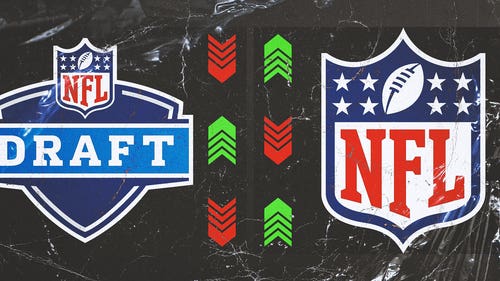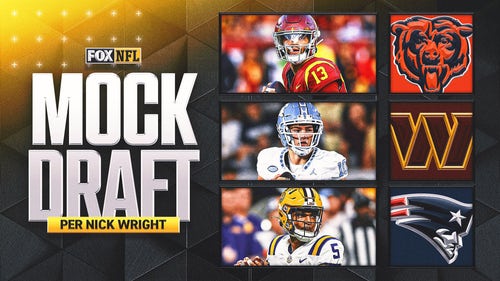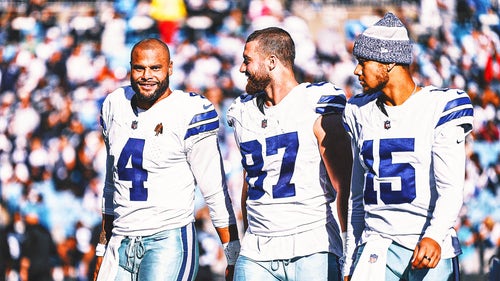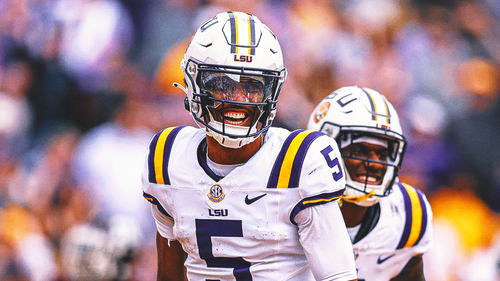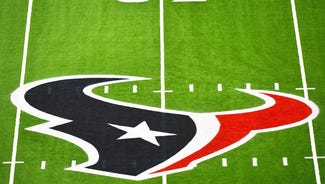
Rang's Gang: The best non-first-round players in the 2021 NFL Draft
By Rob Rang
FOX Sports NFL Draft Analyst
"Rang's Gang" represents the collective answer to the question I'm often asked: "If you were running a team and you needed a (insert position), whom would you take?"
There's only one rule: no consensus first-round prospects. Anyone can compile a list of the top players per position and call them their favorites. Let’s dig deeper.
This year’s squad joins a team that I’m proud to say has gone on to great success in the NFL, including multiple Pro Bowl invitees such as quarterback Kirk Cousins (class of 2012), tight end Travis Kelce (2013) and star linebackers Bobby Wagner (2012) and Kyle Van Noy (2014). Recent success stories from my lists include Jalen Hurts last year and Deebo Samuel as the highlighted receiver in 2019.
Allow me to introduce you to the 2021 squad:
Quarterback: Kyle Trask, Florida

There is no denying that the NFL is increasingly turning toward dual-threat quarterbacks, but in my 20 years in this business, I’ve found that athleticism is the least important of the "Five A’s" I consider key to evaluating quarterbacks, behind accuracy, anticipation, arm strength and attitude.
Of the so-called "second-tier" passers in this class, Trask rates the highest for the "other" four marks, and he offers prototypical size at 6-foot-5, 236 pounds. He had mind-boggling success against elite competition, tossing 68 touchdowns against just 15 interceptions in two seasons as the starter for the Gators.
The fact that he spent a lot of time as a backup at Florida (and in high school) is seen by some as a detriment, but not me. I like the grit and professionalism he showed from the sideline, as well as his ability to rise to the occasion when called upon. He’ll need that in the NFL.
Don’t be surprised when Trask is in the league long after some of the passers selected ahead of him – kind of like two previous Rang’s Gang honorees at the position, Chad Henne (2008) and Tyrod Taylor (2011).
Running back: Khalil Herbert, Virginia Tech

Similar to arm strength at quarterback, I believe straight-line speed is one of the most overrated elements for running backs (and receivers, for that matter). The key trait I look for in running backs is balance through contact. The backs earning top marks for that this year are Alabama’s Najee Harris and North Carolina’s Jovante Williams, which is why I’m projecting both to be first-round picks.
Herbert also possesses that pinball quality to bounce off would-be tacklers and keep his feet churning. He’s a quality athlete as well, clocking in at a very respectable 4.49 in the 40-yard dash and averaging an eye-popping 7.7 yards per carry on a career-high 154 attempts for the Hokies after mostly languishing in a backup role at lowly Kansas earlier in his career.
Utility: Demetric Felton, UCLA

With the NFL becoming increasingly "gadgety," I’ve added the utility position to this year’s roster. Few are better suited to this role than Felton, with a tip of the cap to fellow Mr. Versatility candidates Amari Rodgers (Clemson) and D’Wayne Eskridge (Western Michigan), both of whom I expect to be drafted earlier.
I will admit that I was surprised Felton was clocked at 4.59 seconds in the 40-yard dash (with a sluggish 1.62-second 10-yard split), as he plays much quicker, easily gaining separation as a receiver at the Senior Bowl after earning Second-Team All-Pac-12 honors at running back, with 668 rushing yards in just six games for the Bruins.
Ignore the stopwatch with Felton and watch the tape – he’s a natural playmaker who will contribute to his NFL team as a runner, receiver and returner.
Possession wide receiver: Tylan Wallace, Oklahoma State

This year’s receiver class is loaded with many candidates who could be listed here, and many of them are bigger and faster than Wallace. Few, however, were as productive as the three-time All-Big 12 star (205 catches for 3,434 yards and 26 touchdowns), and even fewer offer Wallace's balance as a route runner, sticky hands or body control to contort in space and make tough grabs look easy.
At just 5-foot-11, 193 pounds, Wallace looks rather "pedestrian" getting off the bus. Some used to say the same thing about the Rams’ Robert Woods, who, like Wallace, is a full-service receiver who does the "little things" such as block for teammates, too.
Vertical threat: Anthony Schwartz, Auburn

In this era of analytics, it is easy to criticize a wideout such as Schwartz, who actually ran for more touchdowns (seven) than he caught (six) for Auburn after signing as a much-ballyhooed recruit. There is no denying that Schwartz is considerably less polished as a route-runner and pass-catcher than some of his peers, but no one is faster.
Schwartz is literally a world-class speedster, taking home the silver medal for the United States in the 100 meters (10.22 seconds) at the World Junior Championships in Finland prior to joining Gus Malzahn’s run-heavy Auburn Tigers.
Possessing a legitimate NFL frame with good muscle mass, Schwartz is more than just a track guy, with 1,756 all-purpose yards and 13 touchdowns scored against elite competition.
Tight end: Briley Moore, Kansas State

Generally speaking, I am not a huge fan of the NCAA’s graduate transfer rules, but I do admire players who gamble on themselves and jump up in competition when able to do so. That is the case with Moore, whose only FBS scholarship offer as a 200-pound high school wideout came from Navy, which led him to ultimately sign with Northern Iowa and then switch to Kansas State.
Adding 40 pounds to his frame through dedication in the weight room, Moore emerged as a two-time all-conference player for the Panthers before jumping to Kansas State in 2020, when he earned Second-Team All-Big 12 honors by leading the Wildcats in touchdowns with a career-high 15.4 yards per catch. Moore is a passionate, highly physical player who plays like every snap is his last.
Offensive tackle: Tommy Doyle, Miami (Ohio)

Just as I have developed the Five A’s for quarterbacks, I’ve come to focus on Five F’s for grading offensive linemen, helping me in my work as a voter for the Pac-12’s Morris Trophy Award. Those are fitness, fundamentals, footwork, force and finish, and this class is absolutely loaded with players who check all of these boxes.
One who isn’t getting enough attention, though, is the massive, 6-foot-8, 320-pound Doyle. Like most blockers of his height, Doyle can struggle with pad level, but he’s remarkably light on his feet for a man of his size, and with his 35 1/8-inch arms, it is a $5 Uber ride to get around him. His 30 career starts were almost evenly split between left tackle (16) and right (14), and there isn’t a passive bone in his body.
Teams that don’t take advantage of this year’s top-shelf talent in the early rounds can look pretty smart by adding a player such as Doyle in the middle rounds and letting him "surprise" as an early swing tackle and potentially future starter.
Interior offensive line: Kendrick Green, Illinois

As mentioned, the ability to "finish" is one of the elements of play I expect of offensive linemen, with many of the most gifted big men lacking the requisite aggression to complete their blocks. That is not the case with Green, a former defensive lineman who brings that kind of mentality (and athleticism) on every snap.
Given that the Illini failed to qualify for a single bowl game in his four years with program, Green’s competitiveness is all the more impressive. He boasts terrific quickness off the snap, as well as the body control and football intelligence to anticipate where defenders at the second level are headed, consistently cutting them off. Experienced starting at both guard and center, I see Green as gold and easily the most underrated of a stellar class of interior linemen.
Interior defensive line: Jay Tufele, Southern California

Some scouts are going to question players who opted out of the 2020 season. They absolutely should not with Tufele, who made his choice early in the process, with the Pac-12 initially canceling its season and his older sister, Noreen, sent to the ICU just nine days later after testing positive for COVID-19. She was one of several of Tufele’s family members to contract the virus. Fortunately, after nearly three months in the hospital with her life at times reliant on a ventilator and her kidneys failing, Noreen, 26, is now free of the virus and recovering, ready to cheer on her 6-foot-2, 305-pound "baby" brother as he makes the NFL leap after just two seasons of play at the college level.
What an impressive two seasons they were. It is very rare that freshmen – redshirt or not – start at USC. Using an almost unfair combination of initial quickness and power, Tufele bulldozed his way through Pac-12 opponents to earn all-conference honors after both the 2018 and 2019 campaigns. Sure, he remains a little raw from a fundamental perspective, but he's undeniably gifted and motivated. I think Tufele is just scratching the surface of the player he’s going to be.
Edge: Joseph Ossai, Texas

By now you’ve probably heard that the 2021 class of defensive linemen is considered below average in comparison to recent years. Part of that might be due to the fact that Ossai – one of its most productive defenders – spent his first two seasons with the Longhorns playing more of an off-ball linebacker role, as he led Texas with 90 tackles, including 13.5 behind the line of scrimmage (five sacks).
Ossai also showed some savvy in coverage, deflecting three passes and intercepting two others. Moved to more of a rush role last season, the just-turned 21-year-old Ossai (April 12) recorded 16 tackles for loss and matched his career-high five sacks in nine games. Ossai’s age, long arms (33 7/8 inches) and explosiveness (41.5-inch vertical!) are exciting. Best of all, he plays with elite effort – a requirement to be on my squad.
Off-ball linebacker: Jabril Cox, LSU

The 2021 crop of off-ball linebackers is stellar, which should make this a tough choice. Cox gambled on himself as a grad transfer at the championship level, jumping from an undefeated North Dakota State squad to the reigning FBS champion LSU Tigers a year ago.
The 6-foot-3, 232-pound Cox isn’t just a cool story, though. He’s an elite athlete who would have earned considerably more interest from recruiters out of high school if not for a torn ACL at the end of his junior season. He put the psychology degree earned in Fargo to good work in Baton Rouge, winning over his teammates with his relentless pursuit of excellence in the weight and film rooms to earn himself a captain role shortly after joining the team.
Better yet, his IQ and athleticism stand out on the football field, where Cox has proven himself to be arguably this year’s elite coverage linebacker, disrupting an eye-popping 26 passes (with nine interceptions!) during his four years as a starter. Don’t think those numbers were padded at the FCS level: Cox set career highs in PBUs (eight) last year in the SEC, with three interceptions, including a pick-six in his first game in a Tigers uniform (against Mississippi State).
Outside cornerback: Ifeatu Melifonwu, Syracuse

I like to see how players react when injuries impact their teammates, which was the case at Syracuse last season, with the Orange losing fellow 2021 NFL Draft prospects Andre Ciscoto a torn ACL in October and Trill Williams to a midseason opt-out.
Rather than struggle with the loss of the playmaking defensive backs around him, Melifonwu stepped up, blanketing receivers on the outside with his 6-foot-3, 205-pound frame (and 32 ¼-inch arms), earning all-conference honors with 10 passes broken up and a career-high 55 tackles.
Of course, the numbers most focus on are the remarkable traits he showed during his pro day workout. Like his older brother, Obi — now in his fifth season in the NFL – Melifonwu possesses jaw-dropping athleticism, including a 41.5-inch vertical jump, 11-2 broad jump and 4.48-second 40-yard dash. To be clear, Melifonwu is not yet a finished product. He is not as reliable as an open-field tackler as I’d like, and he needs to do a better job locating the ball (just three career INTs among 26 PBUs), but these are coachable.
Nickelback: Elijah Molden, Washington

With all due respect to blue-blood programs such as Ohio State and LSU, Jimmy Lake has helped turn the University of Washington into at least the West Coast branch of DBU. Year after year, the Huskies churn out quality defensive backs, including Pro Bowlers Marcus Peters and Budda Baker.
Molden is smaller (5-foot-9½, 192 pounds) and slower (4.60 in the 40-yard dash) than most of his UW predecessors and the top defensive backs in this class, but his instincts might just be the best of them all. Another NFL legacy — Molden’s father, Alex, was selected 11th overall by the Saints in 1996 – it is easy to see that there is plenty of fight in this Dawg, with 25 career passes broken up to go with nine turnovers forced (five interceptions, four fumbles) while playing in all 44 games of his college career.
Whether he plays at nickel or converts to safety, I am confident Molden will emerge as a significant NFL contributor within his first two years in the league, likely outplaying and outlasting many of the "toolsier" defensive backs selected ahead of him.
For more up-to-date news on all things NFL, click here to register for alerts on the FOX Sports app!
Safety: Shawn Davis, Florida

The 2021 crop of safeties has a little bit of a Baskin Robbins choose-your-flavor style to it, with ballhawks, speedsters, run-supporting thumpers and, unfortunately, several players with troubling histories of injury.
Davis is the underrated prospect of the bunch, with a blend of each, including enough durability concerns that he likely will still be available on day three, when his instincts, agility and speed in coverage, sticky hands and fierce hitting could make him a steal. A highly regarded cornerback recruit out of the talent-rich Miami area, Davis earned playing time as a true freshman for the Gators, and he has flashed on tape – when healthy – ever since, turning five of his 15 career passes broken up into interceptions, not including another pick in this year’s Senior Bowl.
One of the most recognized names in the industry, Rob Rang has been covering the NFL Draft for more than 20 years, with work at FOX, Sports Illustrated, CBSSports.com, USA Today, Yahoo, NFL.com and NFLDraftScout.com, among others.








































































































































